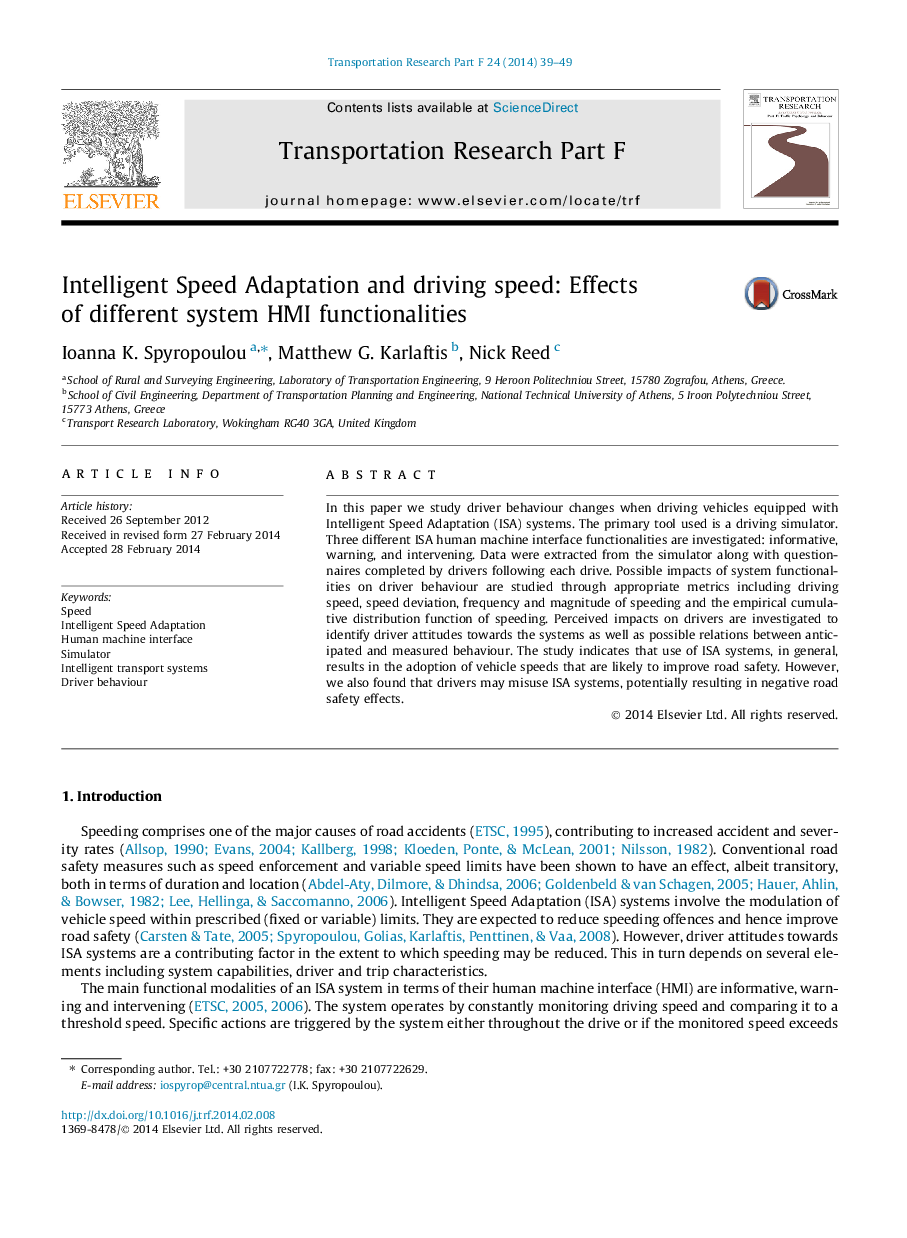| کد مقاله | کد نشریه | سال انتشار | مقاله انگلیسی | نسخه تمام متن |
|---|---|---|---|---|
| 897767 | 1472456 | 2014 | 11 صفحه PDF | دانلود رایگان |

• We investigate the effect of Intelligent Speed Adaptation on speed using a simulator.
• Three distinct system functionalities are used: informative, warning and intervening.
• Aggregate and disaggregate analysis on drivers’ maximum and mean speed is performed.
• Investigated metrics include speeding frequency and magnitude and the ECDF of speed.
• Warning and intervening ISA reduce speeding, but increase specific speed attributes.
In this paper we study driver behaviour changes when driving vehicles equipped with Intelligent Speed Adaptation (ISA) systems. The primary tool used is a driving simulator. Three different ISA human machine interface functionalities are investigated: informative, warning, and intervening. Data were extracted from the simulator along with questionnaires completed by drivers following each drive. Possible impacts of system functionalities on driver behaviour are studied through appropriate metrics including driving speed, speed deviation, frequency and magnitude of speeding and the empirical cumulative distribution function of speeding. Perceived impacts on drivers are investigated to identify driver attitudes towards the systems as well as possible relations between anticipated and measured behaviour. The study indicates that use of ISA systems, in general, results in the adoption of vehicle speeds that are likely to improve road safety. However, we also found that drivers may misuse ISA systems, potentially resulting in negative road safety effects.
Journal: Transportation Research Part F: Traffic Psychology and Behaviour - Volume 24, May 2014, Pages 39–49